Andorra, France, Spain
The State of the Pyrenees
The material evidence of the construction of the Co-Principality of Andorra consists of a group of monuments dating from the medieval ages to the 16th century.
They bear witness to the creation of a peaceful state in the Pyrenees. In Andorra, it comprises 10 sites, in France 1 and in Spain also 1.
Site Info
Official Information
- Full Name
- Les témoignages matériels de la construction de l’État des Pyrénées : la Co-principauté d’Andorre (ID: 6505)
- Status
-
Nominated 2027
Site history
History of The State of the Pyrenees
- 2021: Revision
- Successor to former TWHS Ensemble historique de Santa Coloma (1999) and (part of) Eglises romanes de Andorre (1999)
- Type
- Cultural
- Criteria
- iii
- iv
Links
- UNESCO
- whc.unesco.org
All Links
UNESCO.org
- whc.unesco.org — whc.unesco.org
- whc.unesco.org — whc.unesco.org
- whc.unesco.org — whc.unesco.org
Community Information
- Community Category
- Urban landscape: Medieval European
Travel Information
Recent Connections
News
No news.
Community Reviews
Show full reviews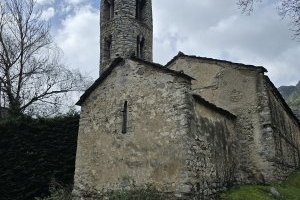
I visited Andorra as a day trip from Barcelona in March 2025. The 7 hours I had in the country were enough to visit 2 of the locations of this TWHS, which compensated the fact that I couldn't visit the Madriu-Perafita-Claror valley WHS.
I first walked from Andorra La Vella to Santa Coloma, it's just a 30-minute walk, mostly along the river. On your way to Santa Coloma you get great views of the Roc d'Enclar, that is also part of this TWHS. The church of Sant Vicenç d'Enclar looks very picturesque on top of the rocky hill and against the mountains rising behind it. I have no clue how you can get on top of the Roc d'Enclar where the church is, it must require some serious hiking!
In Santa Coloma the TWHS site is the church of Santa Coloma (photo attached). To visit it you must go to the Espai Columba museum that is next to it. This is a very small and modern museum. Your entrance ticket includes an audio guide that first leads you through the museum and then to the church. The museum is essential to visit as all the medieval murals from the church are located now in the museum, not inside the church. The murals were taken from the church in 1932 and they've traveled all around the world until returning to Andorra in 2007. The museum has very nice design and the murals are located in a room that …
Keep reading 0 comments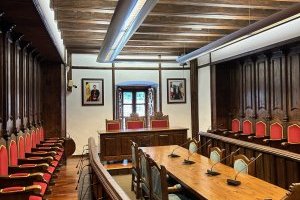
Visited June 2024.
Many other reviewers have inadvertently visited one of the proposed locations for this site in Andorra, although noone yet on the Casa de la Vall, which is what I will focus on here.
The proposed OUV of this site has to do with the establishment of a "peaceful state in the Pyrenees." The historical accidents that led to the statehood of the Co-Principality of Andorra are doubtless interesting, but don't seem to me to reflect any unique interchange of values or real that would constitute OUV... I still think a couple of these places are worth a visit if/when you're in Andorra... if only to keep your sanity in the discount mall/duty-free area/tacky firearm shop zone of the capital!!!
The Casa de la Vall has historically been the seat of Andorra's government and housed all court proceedings and legislative activity for almost all of its history until the Legislative Council moved to the modern-looking building across the street. It remained a working house for its history with guest rooms, kitchens, etc. constituting the main part of the building. It was necessary to travel through these to get to the legislative chamber or courtroom.
At 3pm on the Saturday, I was the only visitor. I spoke to the people in the entrance in French (with which I had much more success in Andorra than English) and watched the panic in their eyes as they realised I was the first tourist of the day not …
Keep reading 0 comments
In Sept 2018 things had moved on at Sta Coloma since Hubert’s visit/review in 2014. Our hotel (The Garden – "Ok" at 60 Eur B+B for 2 with ample free parking) was situated in the Andorra la Vella suburb of Sta Coloma immediately opposite the alley leading to the church, so it was no problem at least to have a look at it from the outside. We had tried 2 of the Romanesque Churches from Andorra’s other T List entry – St Joan de Casselles and Sant Miquel d'Engolasters and found both closed so I haven’t bothered to do a review of them. However we were “in luck” with Sta Coloma and found it open – AND with a new “videograph” presentation.
The Church contains just one in situ mural – a partial “Agnus Dei” in a medallion surrounded by 2 angels dating from the 12C and created, it is believed, by the “Master” of St Coloma. This is located at the front of the nave just before the apse. In the apse itself there should have been a complete set of pre-Romanesque paintings by the same hand, but these had been sold in the 1930s - apparently to help pay for repairs to the church. They were confiscated by the Nazis from the original Belgian collector and finished up in Berlin. However, in 2007 they were recovered (at a cost of over 4 million Euros!) by the Andorran government.
The decision has been made not …
Keep reading 0 comments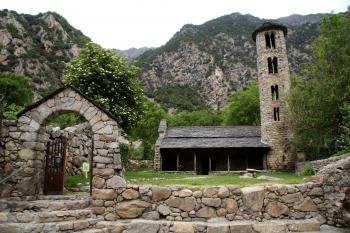
It is not clear to me why Santa Coloma is a separate T-list entry and why it is not included in the "Eglises romanes d'Andorre" site. Maybe because the round bell tower is unusual, or because original murals from the 12th century can be seen inside. However, we could not assess their quality, the church was closed. But Santa Coloma seems to have a special significance in Andorra, because since 2014, the church is depicted on the 10, 20, and 50-cent coins. The "Ensemble historique" also includes the church of Sant Vicens d'Enclar, which is located on a hill just above the village. But it can only be reached by foot and we did not visit. Santa Coloma is located only a few kilometers from Andorra la Vella, and a quick stopover might be worthwhile to check whether the church is open and the murals can be visited.
Keep reading 0 comments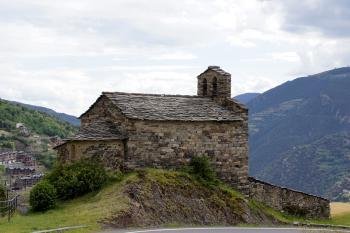
During our visit in Andorra in May 2014, we visited five of the eight churches that are included in this tentative site. Their architectural style is similar to other Romanesque churches in the Pyrenees, but those in the Vall de Boi are far more beautiful and more impressive. I liked most Sant Miquel d'Engolasters and the small Sant Serni de Nagol (photo), which is very similar to the small hermitage in Durro/Vall de Boi. The other churches are located either at a busy road or in a town centre surrounded by ugly modern buildings, not to be compared with the scenery in the Vall de Boi. However, we did not visit the churches in Pal and La Cortinada, which are located in more remote side valleys. None of the churches was open to visitors.
All in all, this tentative site would not add much to the WH list, Romanesque churches in the Pyrenees are very well represented by the Vall de Boi WHS.
Keep reading 0 comments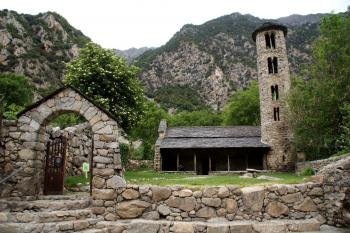
It is not clear to me why Santa Coloma is a separate T-list entry and why it is not included in the "Eglises romanes d'Andorre" site. Maybe because the round bell tower is unusual, or because original murals from the 12th century can be seen inside. However, we could not assess their quality, the church was closed. But Santa Coloma seems to have a special significance in Andorra, because since 2014, the church is depicted on the 10, 20, and 50-cent coins. The "Ensemble historique" also includes the church of Sant Vicens d'Enclar, which is located on a hill just above the village. But it can only be reached by foot and we did not visit. Santa Coloma is located only a few kilometers from Andorra la Vella, and a quick stopover might be worthwhile to check whether the church is open and the murals can be visited.
Keep reading 0 comments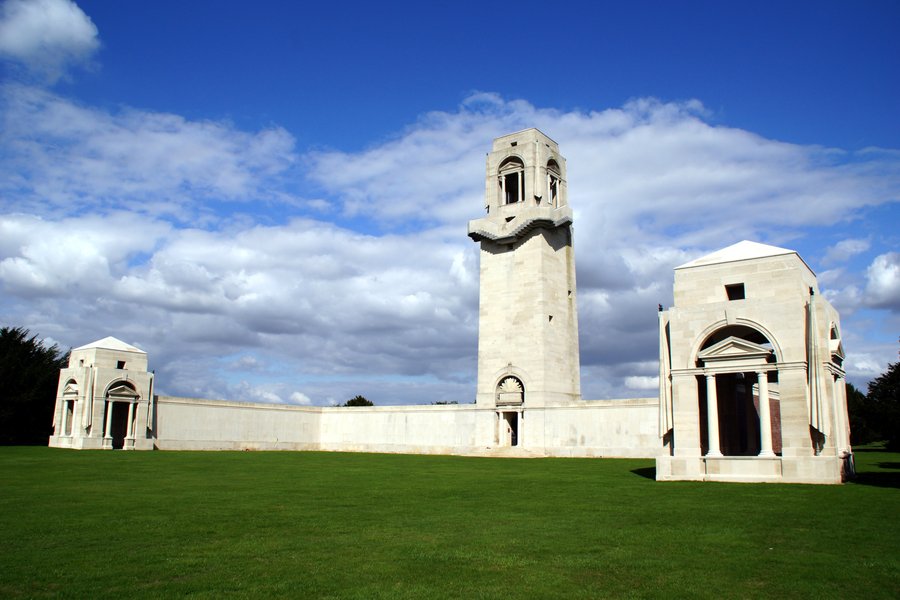
It is not clear to me why Santa Coloma is a separate T-list entry and why it is not included in the "Eglises romanes d'Andorre" site. Maybe because the round bell tower is unusual, or because original murals from the 12th century can be seen inside. However, we could not assess their quality, the church was closed. But Santa Coloma seems to have a special significance in Andorra, because since 2014, the church is depicted on the 10, 20, and 50-cent coins. The "Ensemble historique" also includes the church of Sant Vicens d'Enclar, which is located on a hill just above the village. But it can only be reached by foot and we did not visit. Santa Coloma is located only a few kilometers from Andorra la Vella, and a quick stopover might be worthwhile to check whether the church is open and the murals can be visited.
Keep reading 0 comments
I visited the Church of Sant Miquel d'Engolasters by chance in May 2014 when visiting Andorra's only inscribed WHS. There are some information boards but its condition, its location close to the mountain pass and the fact that it's always pretty much closed didn't impress me much. The churches of the Vall de Boi in Spain are way better.
Keep reading 0 comments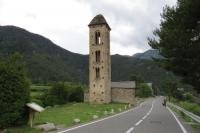
I visited the 12th century romanesque Church of Sant Miquel d'Engolasters, which lies just outside the core zone of Andorra's only WHS so far. The little church is easy to spot as it stands close to the road that leads up to the Lake of Engolasters. It is one of 8 sites that together form this TWHS.
It really is a minor site where a visit shouldn't take more then 5 minutes. The church door was locked so I didn't get in - but its original frescoes have been taken away long ago to the MNAC museum in Barcelona. Most interesting is its tall bell tower, which looks very vulnerable. One decent storm and the dry stone will crumble away. At the highest arch a sculpture representing a human face can be seen.
Keep reading 0 comments